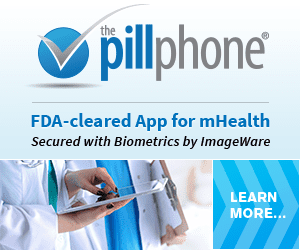Biometrics in healthcare are on the rise according to the most recent market forecasts. According to Grand View Research, a surge in demand for biometric identity management solutions for healthcare has emerged from an increase in medical identity theft. The increased digitization of healthcare that has resulted from the needs of the Affordable Care Act and other sector-wide accessibility initiatives has made medical records susceptible to hack attacks and large scale compromise. And what’s more, healthcare patient data, especially health insurance information, is among the most valuable identity-related information on the black market.
According to Rick Kam, president of ID Experts, cited by Forbes in 2015, the going rate for health insurance data was approximately $70. That’s massive, considering other information like credit cards or SSNs are so cheap as to be practically worthless on an individual scale. But the possibilities for fraudsters to take financial advantage of compromised health data are wide ranging and creative, whether they set up a scheme to collect government subsidies for undelivered medical equipment, or simply exploit it for free healthcare.
It’s not just about money, though. The effects of medical identity fraud go beyond the financial and can have dangerous implications. If medical records are being changed by frauds gaming the system, the victim of identity theft could be prescribed medication that they are allergic to, based on the actions of some stranger. This can have potentially deadly consequences outside of the normal inefficiencies and financial consequences associated with medical identity theft. Health fraud is a crime that pays, but it can also kill.
The Biometrics That Fight Health Fraud
 Thankfully, in the same way that biometrics can bring greater levels of assurance to physical and logical access control by basing authentication on unshareable biological traits, the technology can ensure patients really are who they say they are. With biometric patient identity management, medical records can be linked directly to a subject’s physical body, so simply presenting medical documentation is insufficient for fraudsters to receive care or prescriptions for medication. Furthermore, by adding a biometric component to medical records, duplicates can be culled and databases can be managed more efficiently. With fewer duplicate records, patient identification errors become less common, and it becomes easier to thwart insurance schemes such as those alluded to in the above section.
Thankfully, in the same way that biometrics can bring greater levels of assurance to physical and logical access control by basing authentication on unshareable biological traits, the technology can ensure patients really are who they say they are. With biometric patient identity management, medical records can be linked directly to a subject’s physical body, so simply presenting medical documentation is insufficient for fraudsters to receive care or prescriptions for medication. Furthermore, by adding a biometric component to medical records, duplicates can be culled and databases can be managed more efficiently. With fewer duplicate records, patient identification errors become less common, and it becomes easier to thwart insurance schemes such as those alluded to in the above section.
The Grand View Research report mentioned above pegs DNA biometrics as on the biggest upward trajectory in terms of growth in this market, but as it stands, fingerprint, iris, and palm vein recognition solutions are the most visible modalities fighting healthcare fraud. Regardless of the modality, the result is the same: sensitive medical records are bolstered with the assurance of biometric authentication.
While fighting fraud is the high priority when it comes to strong authentication and EHR, there are also additional benefits to biometric patient ID that go further than protecting against identity theft. There are programs such as KinderGuardian, powered by M2SYS, that bolster public safety by finding missing and abducted children when they check in for clinical care and checkups.
The Battlefront
 While healthcare is lagging behind other vertical markets in terms of biometric adoption and deployment, the patient ID technology we’re talking about here is being deployed at an increasing rate. In 2016 patient ID deployments were at the forefront of healthcare news, with hospitals and clinics across the US adopting biometrics for the dual reasons of security and efficiency.
While healthcare is lagging behind other vertical markets in terms of biometric adoption and deployment, the patient ID technology we’re talking about here is being deployed at an increasing rate. In 2016 patient ID deployments were at the forefront of healthcare news, with hospitals and clinics across the US adopting biometrics for the dual reasons of security and efficiency.
Last year, Imprivata’s vascular biometrics based PatientSecure solution was deployed at NYU Lutheran medical center in Brooklyn, and Florida Hospital Zephyrhills in the Sunshine State, while CTS Healthcare Services embraced the RightPatient multimodal system, leveraging face recognition. In 2015, RightPatient was also deployed at Terrebonne General Medical Center in Louisiana, using iris biometrics in that case to reduce fraud and eliminate duplicate records.
The application of biometrics to patient ID can stretch outside of the hospital and clinic, as we have seen with BIO-key’s EHR deployments in numerous eye care centers across the United States. BIO-key’s technology is deployed in hospitals too, and even is aiding the patient experience in the world of blood donation (though admittedly, patient ID in the process of giving blood is more about adding convenience to the gifting process than mitigating fraud).
These deployments seem to be increasing in frequency, and more companies have maneuvered to offer biometrics in a patient ID and EHR capacity. So if the research is to be believed, and there will be a surge in demand for fraud-mitigation tech in the healthcare space, it won’t be too much longer before biometrics become ubiquitous in protecting our personal medical data.
*
Stay posted to FindBiometrics throughout February as we continue to examine biometric healthcare. Follow us on Twitter and make sure you see all of our special featured and guest content.
Healthcare Month 2017 is made possible by our sponsor: ImageWare Systems


Follow Us